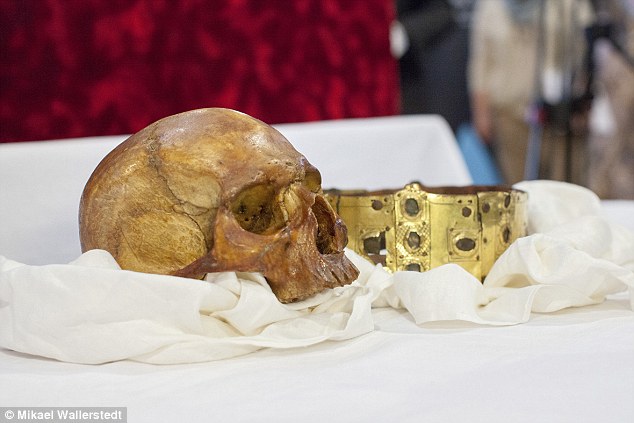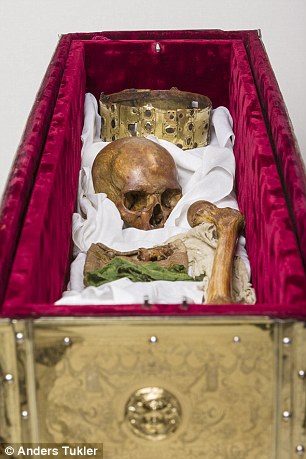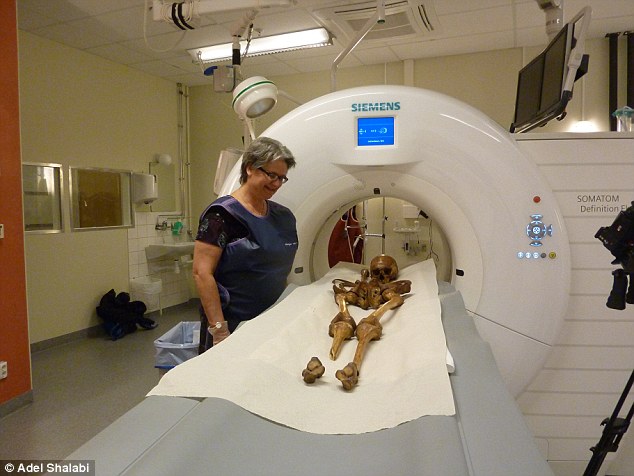Recent research done on the remains of a Swedish man prove to go hand-in-hand, with the terrible stories that were once thought to have been just made up. That man was known as Eric the Lawgiver, Erik the Saint, and Eric the Holy. The legend is that he was a king who died a dramatic death in a battle just outside a church in Uppsala, Sweden after having just celebrated mass. The researchers looking at the remains reveal that his death was, in fact, brutal.
The research project is headed by the Uppsala University. They have been given special access to look into the remains of King Erik XI. He has rested in his grave since 1257. The only documented information about his life is this legend. That writing has been in preserved form since the 1290’s. No other sources mention Erik Jevardsson, the Swedish king who was later sainted.

Obviously, legends such as his are most often unreliable. However, Erik’s legend is actually based on an older legend, which has since been lost. It is possible that the longer legend may even be older than researchers believe it to be. The preserved legend discusses how Erik was chosen to be a king. He ruled fairly and was known as a devoted Christian. He even led a crusade against Finland in support of the church. King Erik was killed in 1160 in his tenth year of rule, by a Danish claimant to the throne. His remains have been resting in reliquary since 1257.
The remains hadn’t been touched since a thorough analysis of the skeleton was done in 1946. Now that there are new methods of analyzing old remains such as King Erik’s, researchers hope to find some new information and evidence about how he was actually killed. Opening up the reliquary, researchers from several different universities and groups worked together to run tests on the remains in order to learn more about the medieval king. After two years of thorough research, the team of researchers is allowed to make their findings public. Some of the tests done were made by orthopaedists, radiologists, genealogists, isotopanalys, and forensics experts.

The reliquary contained 23 bones and all appeared to have been from one person. The interesting thing was that the remains were accompanied by an unrelated shinbone. After radiocarbon dating of the bones, the measured values proved that he had, in fact, died in 1160. The osteological analysis showed that the bones belonged to a man who ranged from the age of 35 to 40 years old and was about 171 centimeters tall.
The bones were then examined by computer tomography at the University Hospital in Uppsala, however, they did not find any noticeable medical conditions. There were DXA and pQCT measurements done on the bones, which concluded that Erik did not suffer from osteoporosis or have brittle bones. In fact, his bones were quite the opposite for his age. His bone density had about 25 percent above the average of a young adult today, proving that King Erik was well-nourished, strong, and lived a physically active life.
The isotope analysis pointed toward a diet of freshwater fish, indicating that the king obeyed church rules on fasting for a certain period when eating meat was forbidden. The stable isotopes also stated that he did not spend the last of his ten years in the Uppsala area but in the province of Vastergotland, which is further south. The results of the study of the isotopes, however, are quite preliminary since there aren’t any other studies to compare them with.
As well as all of the other tests, DNA was taken from the bone samples. Genealogists hope that the samples will shed new light on their questions about the king’s genealogy. The process of testing the DNA is expected to take another year to complete. The researchers, however, are able to reveal now what the samples have so far yielded.
The head of the remains appears to be dented by one or two healed wounds. Researchers believe that those may have been caused by weapons. If the legends are correct, these wounds could have been caused when Erik led the crusade against Finland.
The king’s legend states that in the final battle he took part in, the enemy swarmed him. Then, it is believed, he fell to the ground and that is when his enemy gave him wound after wound until he fell half-dead. From there, they taunted the king for a short time and then cut off his head.

The remaining bones have at least nine cuts that all connect with his death. Seven of those wounds were on his legs. There haven’t been any wounds found on the ribs or the remaining arm bone. This is most likely due to the fact that the king had worn a hauberk on his upper half, protecting him.
Both of his shin bones had cuts inflicted from the direction of the feet. This indicates that the victim had been laying on his front. His neck vertebra had been cut through completely, however, this could not have been done unless the king’s hauberk had been removed. These results actually support the king’s legend that he was wounded in battle and was later decapitated.